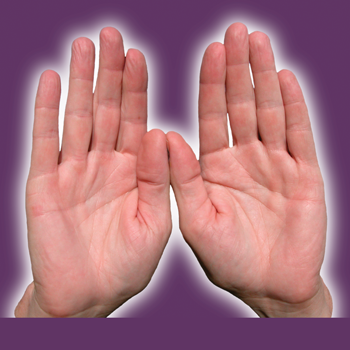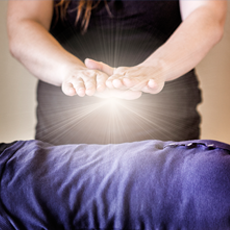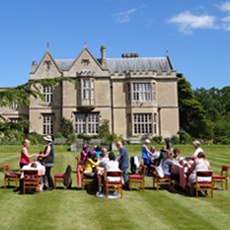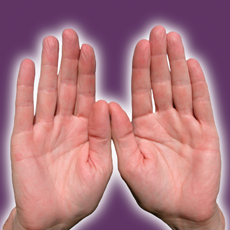by William Lee Rand
This article first appeared in the Summer 2003 issue of Reiki News Magazine.
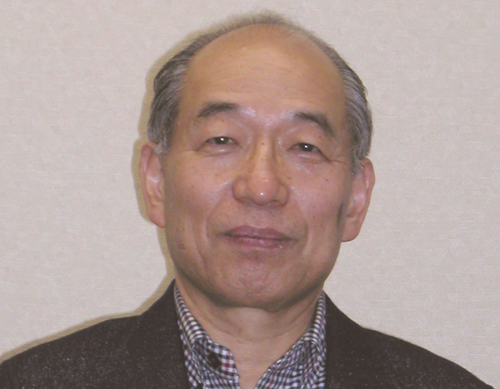 Hiroshi Doi is a leading authority on the practice of Reiki in Japan. His membership in the Usui Reiki Ryoho Gakkai places him in a unique position to access information about the original Reiki methods of Dr. Mikao Usui. His dedication to healing and to preserving the Usui system of Reiki makes him a valuable resource to the Reiki community. He has also developed a system of Reiki Ryoho called Gendai Reiki and is the author of Iyashino Gendai Reiki-ho, Modern Reiki Method for Healing. He resides in Kyoto, Japan. This is the first part of a two part interview. This article was translated from Japanese by Hyakuten Inamoto.
Hiroshi Doi is a leading authority on the practice of Reiki in Japan. His membership in the Usui Reiki Ryoho Gakkai places him in a unique position to access information about the original Reiki methods of Dr. Mikao Usui. His dedication to healing and to preserving the Usui system of Reiki makes him a valuable resource to the Reiki community. He has also developed a system of Reiki Ryoho called Gendai Reiki and is the author of Iyashino Gendai Reiki-ho, Modern Reiki Method for Healing. He resides in Kyoto, Japan. This is the first part of a two part interview. This article was translated from Japanese by Hyakuten Inamoto.
William: Can you explain your background that led you to Reiki? Did you study other healing methods or meditation techniques before getting involved with Reiki?
Doi Sensei: My grandfather was a Zen Buddhist monk and his lineage went back generation after generation. I did not become a Zen monk, but I practiced Zazen (sitting meditation) since childhood and, in a natural way, believed in the world of the unseen. After graduation I worked for the then government-run telephone company and left the company after 12 years. Since then I have had many careers. During those days I kept practicing Zazen (not so enthusiastically, though).
I think I was unconsciously seeking after my life purpose. The reason why I changed my career often was because I found each job to be inappropriate for my life purpose.
I know now that what matters more is how to deal with a job and what to learn from the job rather than what kind of job to take. I guess I was chasing after the Blue Bird of Happiness outside myself.
My family members and I have been gifted with good health, but there were many colleagues and customers of the company who suffered from intractable diseases. A good friend of mine became paralyzed on one side of the body due to cerebral hemorrhage, and this incident made me interested in “healing.” Without knowing it I became very much absorbed in healing things and I learnt more than 30 different healing modalities during the 80’s and 90’s in hopes of opening up a healing salon at my house when I reached the age of 60.
During the early stage of my healing studies I happened to make the acquaintance of a person who was a traditional Japanese Reiki practitioner. However, at the time I had no idea he was a Reiki practitioner. I was just told that it was an effective hands-on healing method. I might have an opportunity later on to detail this story.
William: When did you first hear about Reiki and when did you take your first Reiki class? Can you give us some of the details such as who were your first teachers etc.?
Doi Sensei: It was about the end of the 80’s when I first heard the name “Reiki” in a Tokyo conscious energy workshop called “Shinmeikan healing”. One of the participants had a book titled Reiki Ryoho which was a Japanese version of The Reiki Factor written by Dr. Barbra Ray and translated by Ms. Mieko Mitsui, a New York resident. Ms. Mitsui is a Reiki Teacher of the Radiance Technique and I heard she was back in Japan holding Reiki seminars. I attended her 1st and 2nd Degree Reiki classes in Osaka. This was 1990 or 1991.
When I joined the 1st Degree class I was suffering from pain in my left wrist caused by an excessive practice of golf and I could hardly sleep at night. To my surprise my pain was healed overnight. It was at my first experience of Reiki and it was at this time that I first became aware of Reiki.
William: What were the events that lead to you being invited to be a Gakkai member? (Gakkai means organization and refers to the Reiki organization started by Usui Sensei - The Usui Reiki Ryoho Gakkai)
Doi Sensei: I had the 2nd Degree Reiki training with Ms. Mitsui and I was very willing to learn the 3rd Degree having heard that spiritual uplift could be boosted up with the 3rd Degree Reiki. As I have no knowledge of any foreign language, I was hoping to learn Reiki in Japan. Ms. Mitsui was not qualified to teach classes above the 3rd Degree, so I had to content myself with the 2nd Degree at the time.
I was told that traditional Japanese Reiki had become extinct and that the Gakkai no longer existed, but I was wondering, even though Gakkai was gone, there must have been some students who were the members of a Gakkai branch as Gakkai had branch offices all over Japan, and I wanted to learn Reiki from them. I tried to gather helpful information via the Internet and other means, but in vain. Thus, I arrived at the conclusion that the Gakkai had completely vanished.
In the summer of ’93 I went to Tokyo to attend a British style crystal healing seminar. There I happened to pair off with an old lady who had been a Gakkai member for more than 40 years. From her I learned that the Usui Reiki Ryoho Gakkai still existed. Thanks to an introduction by her, I was invited to become a member of the Gakkai in October, 1993. In Kyoto I was newly initiated into Reiki by Mrs. Koyama, the 6th President, in due form of traditional Reiki Ryoho Reiju (Gakkai style attunement). Koyama Sensei was 87 years old at the time and I vividly recall that she was kind enough to allow a new member like me to sit next to her and responded tenderly to many questions of mine.
William: I understand that the Gakkai was started by Dr. Usui. Can you tell us about its history? How was it started and how did it develop? Who were the important people? How did it change because of the war etc.? Please include any interesting facts or details.
Doi Sensei: Usui Sensei was born in August 1865 in Taniai-mura, a village in Gifu-ken prefecture. He left his hometown at an early age and struggled throughout his studies in Europe, America, and China. He broadened his ideas through many different careers: public servant, office worker, businessman, newspaperman, secretary, and politician, among others. Eventually he came to seek the purpose of life and to recognize that the purpose of life is to attain the state of an-shin ritsu-mei, that is, to learn the fact that man has been given a role to play that is sustained by the universe and then to fulfill one’s role with a calm mind by trusting and leaving all to the universe, no matter what happens in the course of life. He set upon the path of Zen Buddhism in order to grasp that meaning as a real feeling in his soul, not as a mere comprehension in his head. At a Buddhist temple in Kyoto, he trained himself in Zazen meditation for about three years to strive for a true state of satori, or enlightenment, like an-shin ritsu-mei. But a state of satori still eluded him.
In the spring of 1922 on Kurama-yama, he set out to fast with the resolve that his life would end there unless he attained enlightenment. At midnight on the 21st day of his fast, a strong Reiki of the universe penetrated his brain, resonating with Reiki in his body, and he attained a feeling of oneness with the universe. He was then enlightened and, at the same time, a healing power was bestowed upon him. Usui Sensei named it Reiki Ryoho and decided not to monopolize it, but to share it with many people. He created the principles, or Five Precepts, and the instructional method. He moved to Aoyama, in Tokyo, and founded the Usui Reiki Ryoho Gakkai.
Enrollment as a member was required because a prescribed instruction was necessary to learn Reiki Ryoho, but Reiki treatments were offered to non-members. People from all over who wanted treatments waited in long lines outside the house. Many high-ranking naval officers were enrolled in the Gakkai. One of them was Rear Admiral Ushida Juzaburo, who became the second president of the Gakkai and the successor of Usui Sensei. Rear Admiral Taketomi Kanichi took office as the third president and Vice Admiral Wanami Hoichi, as the fifth president, administered the Gakkai in a difficult postwar time.
Naval Captain Hayashi Chujiro, who enrolled later, accomplished an important role: to spread Reiki the world over, thus meeting Usui Sensei’s expectations.
In September 1923 the Great Kanto Earthquake occurred. It was a great disaster, with 104,000 people killed or missing and 460,000 homes collapsed or destroyed by fire. Usui Sensei and his disciples roved the town the days following the quake, treating the wounded and saving innumerable people from death. It is said that this incident brought more new members— writers, entertainers, religious men, and martial arts practitioners to the Gakkai. In February 1925, the new dojo of the Gakkai was built in Nakano in order to expand the Gakkai. From this time on, Usui Sensei was frequently invited to teach and treat people all over the country.
In March1926 he suddenly passed away on the road in Fukuyama. It is said that Usui Sensei had over 2,000 students and 21 of them were given Shinpiden. The names of eleven Shinpiden students, three of them women, are being confirmed.
William: Is the Gakkai the only group or school that is teaching the original form of Usui Reiki Ryoho or are there others?
Doi Sensei: Strictly speaking, the Gakkai is the only group (organization) that continues to use the original form of Usui Reiki Ryoho (philosophy and techniques). People who left the Gakkai, (mentioned in the second interview) presumably continued with the energy of Usui Reiki Ryoho, but structured an original style of their own by adding new ideas or casting aside things traditional. There are some people in Japan and in the West who claim, “this (mine or ours) is the original form of Usui Reiki Ryoho.” This claim should be fairly inspected and verified.
The Gakkai has preserved the original form putting a strong stress on its mission to continue teaching the tradition of Usui Sensei, which has made the Gakkai appear exclusive from the outside. I’ve been suggesting that they (the Gakkai) should make efforts to realize another mission assigned by Usui Sensei that “Reiki Ryoho should be shared with many people and the joy be jointly shared
William: Can you explain what your training was like in the Gakkai? What did you learn as a new member and what took place at the meetings?
Doi Sensei: During Usui Sensei’s time the meeting was called the Shuyokai. It is now called Kenkyu-kai and is held at the Tokyo head office three times a month. Because of my job, I was unable to attend the Tokyo meetings and instead joined those held at the Kyoto branch. At that time, Koyama Sensei would come to Kyoto almost every month. Senior members encouraged me to sit next to Koyama Sensei, saying, “As you are a new member, sit near Koyama Sensei so that you will receive a lot of Reiki.”
At Kenkyu-kai, Seiza-style sitting was once the practice, but now participants sit on chairs in a circle. The meetings began with talks by Koyama Sensei. The talks were not serious ones, but on a variety of topics based on Koyama Sensei’s own experiences. I recognized that, on the whole, her talks embraced many lessons on how to live in peace through the guidance of Reiki. After her talks, Gyosei of the Meiji Emperor are recited. Then Kenyoku, Joshin-kokyu, Gassho, and Seishin-to-itsu are performed. Next all the participating members receive Reiju, (attunement) which is given by Koyama Sensei and a Shihan, who is appointed each time by Koyama Sensei. After Reiju, the Five Precepts are recited three times, followed by Reiji; then there is a question and answer session, Reiki-mawashi, and finally Shuchu-Reiki.
William: Did you receive any special training from Mrs. Koyama?
Doi Sensei: Koyama Sensei used to say, “Reiki is the light of love,” and that it is important to give hands-on treatments with one’s heart wishing to be helpful to many people. I had an opportunity to receive hands-on treatments from Koyama Sensei several times. The treatments were carefully and comfortably done. She used to tell me often, “Look, this is Hibiki.” Being able to sense Byosen (Hibiki) is the very basis of traditional Reiki Ryoho.
William: Can you please explain Hibiki.
Doi Sensei: When there is a life energy block or a disturbance in health, there are always minus waves (negative waves) in the causal area. They are called “Byosen” and the technique to sense Byosen in the hands is called “Byosen Reikan Ho”. And “hibiki” is a sensation in your palms when Byosen is detected. These can include a variety of sensations such as heat, cool, painfulness, numbness (tingle) and the like varying from healer to healer. Hibiki occurs at the spot of the cause of the disease, not at the symptom area. For instance, in the case of a headache “hibiki” occurs on the head if the cause lies in the brain, but there will be no “hibiki” on the head if the cause lies in an internal organ.
Also, if there is a cause there will be “hibiki” even before a symptom of the disease appears. Even after a doctor declares “a complete recovery” there is a high probability of relapse while “hibiki” remains. It is necessary to get rid of it (hibiki) in order for a complete recovery to take place.
William: How long did it take to become an Okuden (Reiki II)? What were the requirements to graduate to this level?
Doi Sensei: It took me seven years. I received Shoden (Reiki I) on October 22, 1993 and officially received Okuden on October 28, 2000. In traditional Reiki Ryoho, basics of Teate-Ryoho (hands-on method) are perfected at the Shoden level. New enrollees are given Shoden after they receive the first Reiju and are then certified at 6 Toh, or 6th rank, in capability. After this point, their rank is upgraded according to the progress they make in their training. One is certified as 3 Toh, or 3rd rank, when one successfully completes the foundations of Teate-Ryoho. The abilities to be mastered to attain this rank are sensing Byosen (Hibiki) exactly, followed by performing Reiji, in which one’s hands are guided and naturally led to Byosen, and finally having it recognized that one’s capabilities of Teate-Ryoho, or radiant Reiki power, have surpassed a certain norm.
Those who are certified at 3 Toh can move on to Okuden if they desire, but without application for the Okuden level the member remains at the Shoden level. As Usui Sensei graded himself at 2 Toh, or 2nd rank, the highest rank among members is the 3rd rank. Shinpiden members stay on the same level with Okuden members in terms of their capacity.
William: Can you explain the Okuden level? What did you learn and what skills did you develop?
Doi Sensei: As I mentioned in response to the previous question, Shoden is the level at which one perfects the basic skills of Reiki Ryoho. The treatment or healing at this level is mainly intended for oneself and one’s family members. At the Okuden level the benefits of Reiki are to be shared with many people. When there were 60 branches of the Gakkai offering Reiki Ryoho training to anyone who desired it, it was the Okuden members who were the healers.
Now Reiki Ryoho treatments at the Gakkai are limited to Gakkai members and their families because of medical system regulations. Traditional techniques like osu (pressing), naderu (stroking) and tataku (patting) are no longer practiced for fear that such techniques would be considered massage and no longer conform to laws and regulations. Only techniques of sensing Byosen and hands-on treatment are taught now, though at the Okuden level, the three symbols and mantras are taught in the name of tradition, to be handed down.
The techniques I teach at my seminars or workshops are not those of the current Usui Reiki Ryoho Gakkai, but chiefly those from the time of Usui Sensei to Wanami Sensei.
This article first appeared in the Summer 2003 issue of Reiki News Magazine.
Hiroshi Doi is Interviewed (2003) – Part II
by William Lee Rand
This article first appeared in the Fall 2003 issue of Reiki News Magazine.
William: Can you explain something about the Okuden symbols? Is the Gakkai understanding of the symbols different than our understanding in the West and can you explain this?
Doi Sensei: The three symbols, if one is strictly speaking, are different from those used in the West. The symbols used in the West do vary a little from each lineage or school, but they are still not completely deviating and, on the whole, look very much the same as the traditional ones. The traditional symbols differ slightly in shape, though we may call them different from those of the West.
The symbols are effective tools in Reiki and, in my opinion, have two roles. The first role is to connect the practitioner to the special frequency of Reiki waves specific to each symbol. The second use of the symbols is to alter the length of the waves according to the practitioner’s purpose or purposes so that the higher waves of Reiki can be utilized on earth. For instance, the first symbol is used like a transformer when more Reiki “power” is needed. Moreover, the more people use the symbol, the more effective it becomes, due to the accumulation of collective consciousness. I think that the symbols, because they are easy to use and because of their effectiveness, greatly help in the spread of Reiki.
However, Usui Sensei said, “You will find for yourself that you have no need of the symbols after you have used them again and again and again,” and you will soon “uplift your consciousness to become one with the universe.” So even though the symbols are tools to connect with Reiki, their necessity will no longer exist when everything in your daily life comes to resonate with Reiki.
I compare the symbols to a rubber swimming tube used when one first learns to swim. The tube is a very helpful tool for a beginner, but one needs to let go of it to become good at swimming. Up to the point at which one no longer needs them, the symbols, like the rubber tube, should be used with care. But if one believes that one’s abilities are owing to the tool, one will not be able to let go of it. The basis of the symbol is the same all over the world, though some differences between the symbols themselves can be found; in the same way that rubber swimming tubes vary a little in their design, if not their purpose.
William: Would you please give a description for each of these Japanese Reiki concepts:
Doi Sensei:
Byosen: This is negative energy that occurs at the area of the cause of a disorder or disease.
Kenyoku: Traditionally a body is cleansed with water before performing sacred rituals, and Kenyoku is a purification method to cleanse a body with Reiki energy in place of water.
Joshin-kokyu: This is a breathing method to purify the mind.
Gassho: This is done by placing the hands together in front of one’s breast to express gratitude or to say a prayer.
Seishin-to-itsu: This a meditation method used to calm the mind and let go of idle/stray thoughts.
Reiju: This is the original form of Japanese attunement.
Reiki-mawashi: Students stand in a circle holding hands and allow Reiki energy to flow around the circle.
Shuchu-Reiki: This is done in a group with hands in Gassho. The students focus their consciousness on one thing such as a person, an object, an event, a venue, etc., and the Reiki energy of all the practitioners is concentrated on the object. Shuchu-Reiki can be done when we pray for the world peace or for health and happiness.
William: Is there anything interesting about the Gakkai and its teachings that you think important for us in the West to know?
Doi Sensei: It seems there are rumors that the Gakkai is exclusive and reluctant to accept people, that those who have learned Western Reiki will be excluded, or that foreign people in particular are excluded. If these rumors were true I may well have already been expelled from the Gakkai myself. I have never concealed the fact of my having learned Western Reiki and Shinpiden and Okuden practitioners from the Gakkai freely come and join my Reiki Gathering.
On the other hand, it is true that there are some among the senior members who are not happy with my activities outside the Gakkai. This kind of thing happens everywhere. I believe that all I need to do is just do my part. I heard that a foreign lady once met with Koyama Sensei just before leaving Japan, and that she was very moved to hear Koyama Sensei say, “You could be a member and learn if you would stay here longer.” Koyama Sensei was very thoughtful and all embracing, and I think because she was so, she had no intention to exclude people.
Yet it is true that the Gakkai has shrunken in size and has not established a system to enroll many new members. This is because Koyama Sensei, having assumed office as the first female president at the time of turmoil after the war, was very busy struggling to preserve the light of tradition that was, at many points in time, on the edge of ruin, as people showed no interest in Reiki. This may have resulted in the Gakkai appearing to be exclusive from an outside point of view.
At the New Year meeting at the Gakkai Head Office in January of 2001, Mr. Kondo, the current president, asked me to tell to him and the other Shihan (teachers) about the state of Reiki in the West. They all expressed a strong interest. I proposed that the Gakkai could offer information on the Gakkai website. But they were not ready for that, and the proposal was declined.
Later, I asked for a message from the president to be delivered at the URRI Spain 2001 meeting, but in vain. However, Kondo Sensei does say to the members whenever he has an opportunity, “Let’s uplift ourselves so that we do not feel ashamed in the face of Reiki people in the West.”
On a New Year’s greeting card from Kondo Sensei this year he wrote, “I feel happy to learn that Reiki is being globally recognized.” Usui Sensei voiced this wish for the future: “I’d like to share a joy in common with many people by teaching them Reiki Ryoho.” I believe that wish will be realized, and that everybody will be able to touch Usui Sensei’s energy.
William: What role did Dr. Hayashi play in the Gakkai?
Doi Sensei: It is said that Hayashi Chujiro Sensei was the last Shinpiden disciple certified by Usui Sensei and was Shihan. At the time a Shinpiden disciple was supposed to engage in the spread of Reiki Ryoho and in Reiki treatments at the Gakkai head office or to open branch offices and engage in Reiki activities. Usui Sensei assigned a task to Hayashi Sensei, who was a naval doctor, to open a Reiki clinic apart from the Gakkai activities, in order to study and promote the efficacy of Reiki Ryoho from a medical doctor’s point of view. Of course, it was intended for the results to feed back to the Gakkai.
William: I understand that he broke away from the Gakkai to form his own school. Can you tell us why he did this?
Doi Sensei: Hayashi Reiki Kenkyu Kai is said to have started at the time Hayashi Sensei opened the clinic, not at the time he left the Gakkai. The role of Hayashi Sensei was “to cure many of the sick by means of Reiki treatments,” and “to study to improve the efficacy of Reiki Ryoho through treatments.” His clinic’s purpose was to accomplish this former goal and the latter one resulted in the organization of Hayashi Reiki Kenkyu Kai. Neither of these activities was part of the Gakkai, but was set up through Usui Sensei, though both seemed to have been initiated with the full support of the Gakkai.
It was after Usui Sensei’s transition, or death, that Hayashi Sensei became independent as Hayashi Reiki Kenkyu Kai and left the Gakkai. Supposedly, there were differences of opinion between then President Ushida and Hayashi Sensei. It appears that a policy allowing Hayashi Sensei to study freely was changed. Hayashi Sensei, after having become independent as Hayashi Reiki Kenkyu Kai, respected Usui Sensei and kept handing down Usui Sensei’s teachings and the name of Usui Reiki Ryoho to people. He did this by practicing Reiki treatments and teaching classes with a scroll hanging in the front of the room, written by Hayashi Sensei himself, bearing the Five Precepts—Usui Mikao Sensei Ikun Gokai—an admonition of the late Usui Mikao Sensei. The same three-level system as the Gakkai, with Shoden, Okuden, and Shinpiden levels, was adopted. Certificates issued are under the name of Hayashi Reiki Kenkyu Kai, but they carry the name Shinshin Kaizen Usui Reiki Ryoho or Mind/Body Improvement Usui Reiki Ryoho, to signify that Usui Reiki Ryoho is instructed.
William: How did Dr. Hayashi’s style of Reiki change after he left the Gakkai?
Doi Sensei: It is not that his style changed when he left the Gakkai, but that a new style was developed from the beginning of his Kenkyu Kai.
A recipient, except a seriously ill person, was to sit when receiving treatment; this sitting position was changed to a lying position on a table. The treatment method was changed from one-on-one to several-on-one.
These are the most outstanding features of the change, but the following changes are also recognized:
An original hands-on position was developed and the new Reiki Ryoho Shinshin or “Guidelines for Reiki Healing Method” were created. A new system of conferring and passing on Reiki Ryoho was established, and a monthly five-day workshop was held at which Okuden was given.
While at the Gakkai, the navel and the Tanden were considered important, the energy centers like the meridian lines of acupuncture, Tsubo, or vital points, and charka, etc. became important.
William: Were there any other members who broke away from the Gakkai and started their own schools of Reiki similar to what Dr. Hayashi did?
Doi Sensei: It’s said that at the time of Mr. Ushida’s presidency many members broke away. The following two that are well known:
Mr. Eguchi Toshihiro learned Reiki Ryoho from 1925 to 1927. Critical of the Gakkai, he became independent, and set up Tenohira Ryochi Kenkyu Kai. Well known among his students were Mr. Eguchi Yasukiyo, Mr. Mitsui Koshi, and Mr. Miyazaki Goro. It is estimated that there were 500,000 students under him.
Mr. Tomita Kaiji learned Reiki Ryoho from around 1925 and set up Teate Ryoho Kai after Usui Sensei’s death. He propagated Tomita-ryu Teate Ryoho. There were four levels: Shoden, Chuden, Okuden, and Kaiden. Each level was to be completed in five days with two hours’ training each day, but fifteen days were required to complete Kaiden. Famous among his students was Mr. Asuke Jiro. It’s estimated that there were over 200,000 students.
Besides the two people mentioned above, it’s said that there were several people who established new organizations or became religious men, but this is denied by each organization involved. Only Hayashi Sensei kept handing down the name of Usui Reiki Ryoho in respect for Usui Sensei, even after he had broken away from the Gakkai.
William: Can you explain Gendai Reiki and why you decided to create it?
Doi Sensei: Gendai Reiki Ho, or Gendai Reiki, based on Usui Sensei’s philosophy and the rationality of Western Reiki, is designed to be easily practiced in daily life and with maximum benefits. It is not “a new Reiki Ryoho”, nor is it “a new Reiki lineage”, but it is “the new method to practice Reiki Ryoho”, which I’ve been practicing for myself and of which I have been enjoying the benefits all of the time.
How Gendai Reiki Ho was created
I learned Western Reiki and acknowledged that it is highly effective. Later, I was initiated into Reiki by Koyama Sensei, president of the Gakkai, and I really felt the lofty spirituality handed down from Usui Sensei. Since then, I came by valuable materials and information about Reiki. I sorted and structured them with a focus on “mind/body healing” and “spiritual growth” so that I could benefit from it myself. That is what is called Gendai Reiki Ho. At first I was practicing it alone, but my friend who had become aware of a change in me asked that I hold a seminar for three therapists. That was the impetus for spreading it to people who were drawn to me. We have been striving together to grow ever since.
Usui Sensei said, “Reiki is Ki (energy) and Light that fills the universe.” Reiki are waves of light that lead all to harmony, and fill the space all around us. In order to receive Reiki, it is necessary that a receiving set is completed. The techniques of Gendai Reiki Ho are those of “self-purification and self-development’ that aim at resonance with Reiki waves all of the time, with no consciousness required after completion of a receiving set, but with lots of conscious practices of the techniques.
It is not their purpose merely to be learned and used.
The basic points of Gendai Reiki Ho
Gendai Reiki Ho was structured based on the following four premises:
1. “Mind/body healing” and “spiritual growth” are the key words. These are techniques that allow one to live life abundantly.
2. Effectiveness is stressed. Dogmatism, prejudice and secrecy should be avoided. 3. Secret, mystery and miracle are not advocated.
4. Effective techniques that promote characteristics of Reiki should be adopted. The purpose and reason should be clarified.
5. Techniques should be simplified, standardized and easily used. Use in daily life comes first.
William: Is Gendai Reiki considered to be Japanese Reiki or is it a combination of Japanese and Western Reiki?
Doi Sensei: Gendai Reiki Ryoho can be considered to be Japanese Reiki seen from the perspective of “the energy”, but seen from that of “the use” it is a combination of Japanese and Western. However, from a standpoint of efficacy for “mind/body healing” and “spiritual growth”, the techniques are adopted not only from Japanese Reiki or Western Reiki, but also from other than Reiki Ryoho. In Japan Gendai Reiki is being understood that it is a simplified Japanese Reiki for modern people with an addition of rationality (practicality) of Western Reiki.
This article first appeared in the Fall 2003 issue of Reiki News Magazine.


